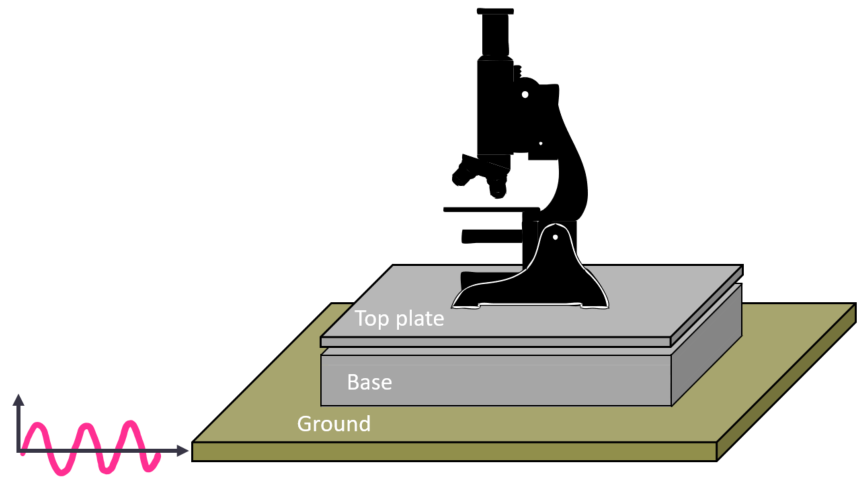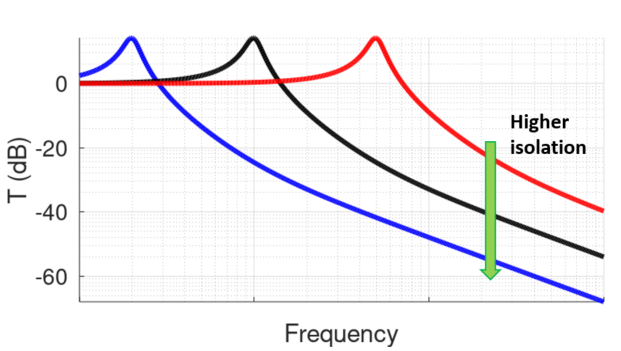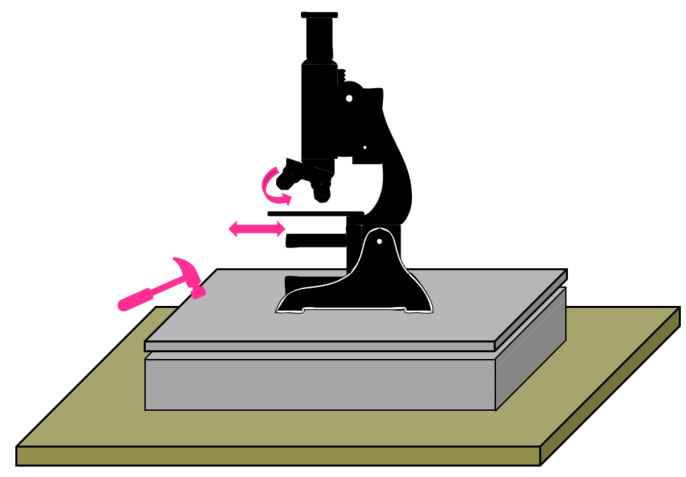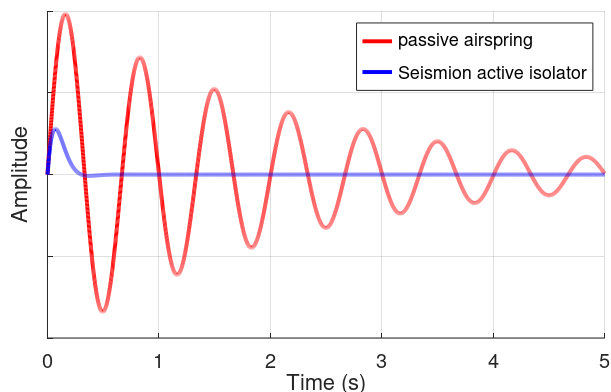The difference between vibration isolation and vibration stabilization
There is often some misunderstanding between vibration isolation and vibration stabilization, which one is more important for your application, and wether the vibration isolator product can fulfill this requirement. This article explains the technical background and explains the advantages of Seismion Reactio as vibration stabilizators.
Vibration isolation in this contect typically refers to ground isolation (but can also mean acoustic isolation for example). The source of excitation is the base, on which the application or the isolator is placed. These disturbances are building vibrations, which are excited by foot-fall, air-conditioner, wind, nearly traffic or elevators, to name just a few.

The goal of a vibration isolator is to minimize the transfer path from ground to the isolated top-plate. Passive isolators like air springs or rubber mounts are therefore designed to be rather soft and weakly damped. The softer it is, the less force is reaching the top-plate, F=cx. Ideal for isolation would be zero stiffness, however practically this is limited by the payload capacity requirements and geometry. The following figure shows transmissibility curves for 3 isolators with different stiffness values.

The lower stiffness can be obtained in the resonance frequency, which is shifted to smaller values. Since isolation is only achieved above the resonance frequency, both the frequency range with isolation as well as the amount of isolation is improved.
Active isolators often also rely on a soft mount design, but they also feature an active feedback control, which further reduces the resonance frequency of the passive system. Therefore, Seismion active vibration isolators are based on a more rigid mount, which strongly helps for the stabilizing function, as we will see in the following.
Stabilization is understood as the ability of the system to counteract against direct excitations. Such excitation is acting directly on the isolated part. Typically it is coming from direct user interaction, for example pressing a button or looking through a microscope. Also the application itself can generate vibrations, like changing lenses or moving XY-stages for surface inspection.

For vibration stabilization, the goal is to minimize the settling time of the system. Settling time refers to the time period, which is needed for the system to come to a rest. The following figure shows the excited vibrations after an impuls, which occurs for example after acceleration or deceleration of a moving table.

These graphs clearly shows the big advantage of active Seismion isolators compared to air springs. The soft mount design of passive isolators is in fact counterproductive for stabilization, since the system performs several cycles of the weakly damped and low frequency vibration. The active isolator however, offers a strong stabilization performance. This is partly due to the skyhook-damper design principle, and to a stronger extend due to the stiffer and higher damped mount, which efficiently counteracts the direct disturbance.
Seismion Reactio isolators are therefore also the perfect choice for inspection and production devices with moving stages.
